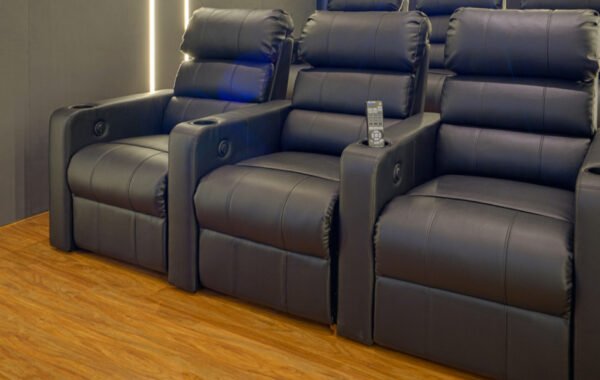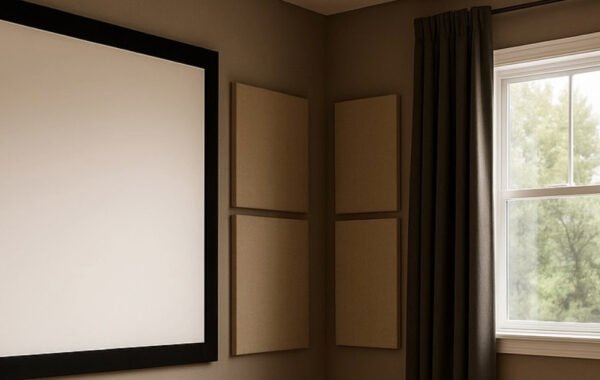
How to Reduce Echo in your Living Room
Empty vessels make more noise! So does empty rooms. Though we find it fascinating when we hear ourselves 7 times in the world-famous whispering gallery at Gol Gumbaz, Bijapur, or on the top of any mountain ranges, do we share the same feeling when it happens daily in our own home spaces? Would you appreciate hearing echoes/reverberation of every tiny sound produced in the room?
Sound is the fundamental essence of the universe, and its creation is inevitable, and so are its associated characters. Echoes are a continuous reflection of sound waves that occur majorly due to the absence of absorptive elements in the room.
It keeps recurring till the sound intensity is lost. Flutters of echoes create a disturbing, uninviting ambience. You find your own words lost in the echoes leading to a very disruptive conversation.
Since the world is a very musical place, your bedroom or living room is bound to have some form of music or sound produced from your speakers, television, gaming stations or your music instruments. When you install such audio systems in an untreated or bare room, echoes are sure to happen.
If tunes that are meant to soothe you turn into a ruckus of noise, the sole purpose of investing your time and money on peace and pleasure gets destroyed.
Science is such a divine subject that it provides a solution for every problem that it creates. You can treat the echoes with very few essential modifications or adaptations that easily fit any budget constraints. But for that, it is of primary importance for us to understand its origin.
Hard surfaces in any room, such as the walls, ceiling, and flooring, serve as the source for an echo in the absence of few soft or acoustic savvy materials. Two directly opposite plain walls, large height ceilings, or huge rooms are few such instances that directly impact sound quality.
Flooring materials such as stone, hardwood, marble, and tiles with glass windows and wooden furniture further induce sound distortions.
Based on the room aesthetics and your requirement, there are diverse techniques to deal with echoes.
Presenting to you the best five quick solutions to reduce echo and unwanted sound reflections.
1. Canvas paintings for side walls:
Adorning your walls with large canvas paintings stuffed with an acoustic material such as Rockwool, Glasswool, Poly Wool, or foam reduce echo. Each time sound strikes these canvas-covered walls; they are efficiently absorbed by the filled acoustic substances, leaving no room for reflections. It’s also important to not hang any photo frames as they serve as hard surfaces facilitating echoes.
2. Rugs for bare floors:
Hard floors such as stone, hardwood, marble, and tiles act as excellent reflective surface for sound waves to create echoes. Laying large rugs on such floorings create soft surfaces to achieve noise control.
3. Acoustic foam/board panels for rooms:
Acoustic foam or Acoustic boards are perfect inexpensive sound absorbers that you can use to reduce echo. The quantity of usage of these acoustic foam and panels depends on your room size and the room’s purpose. Treatment techniques, however, differ from home theater and that of other rooms.
4. Upholstered furniture for rooms:
Fabric upholstery not only enhances the aesthetics but also reduces echoes. Upholstery couches and plump recliners absorb sound better than leather or vinyl furniture. Echo in the room is inversely proportional to the number of upholstery furniture in the room.
Since these can be matched exceptionally well with your interiors, include as many upholstered sofas, couches and recliners as possible and enjoy an echo-free environment.
5. Plush towels for kitchens and bathrooms:
Sound reflective floors and walls in kitchens and bathrooms make way for echoes. Carefully planning the place to hang or spread plush towels or table cloths will reduce echo. A plush towel wraps up the sound to eliminate any echo in the kitchen and bathroom.
As each human is different from the other, so are buildings and their associated problems. Each one requires its attention to address its acoustical challenges.
An acoustic consultant does justice to your space by analyzing and identifying the right concerns to provide the best remedies to each of them.
Having professionally qualified acoustic consultants on board to reduce echo and reverberation problems in your residence or workplace is the way forward to achieve outstanding sonic performance.







